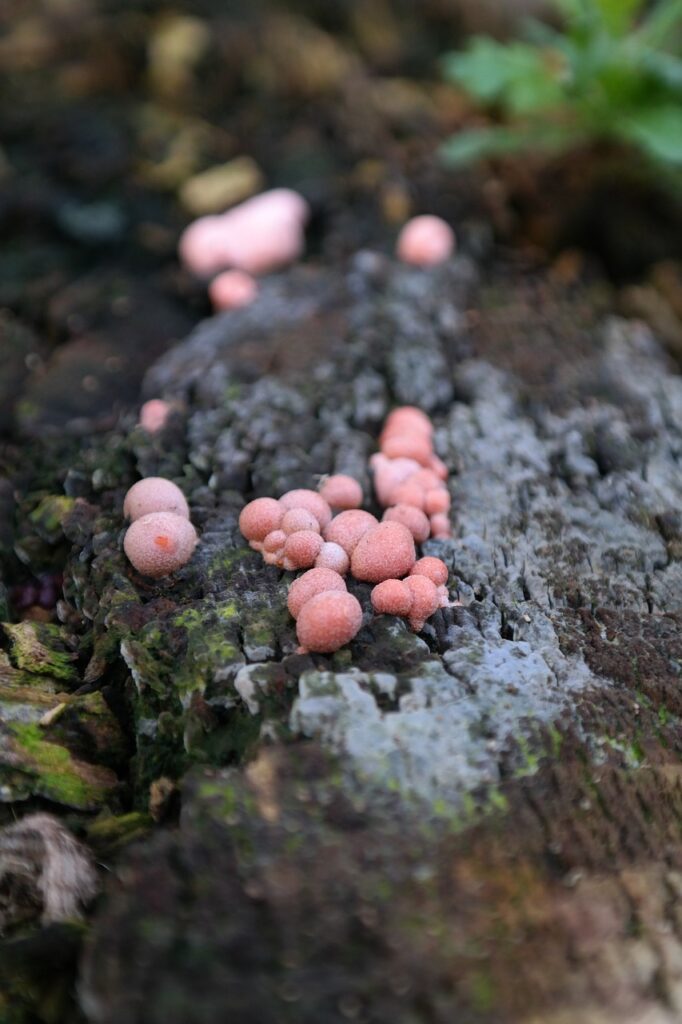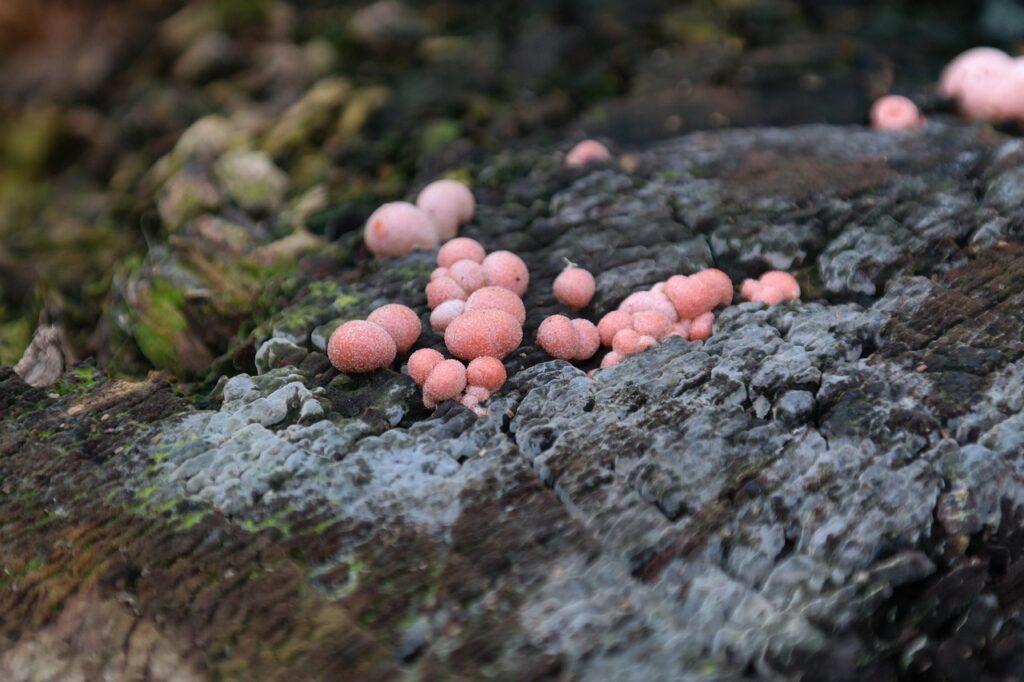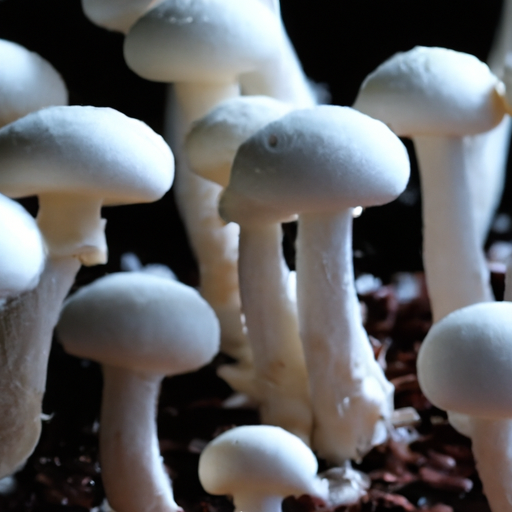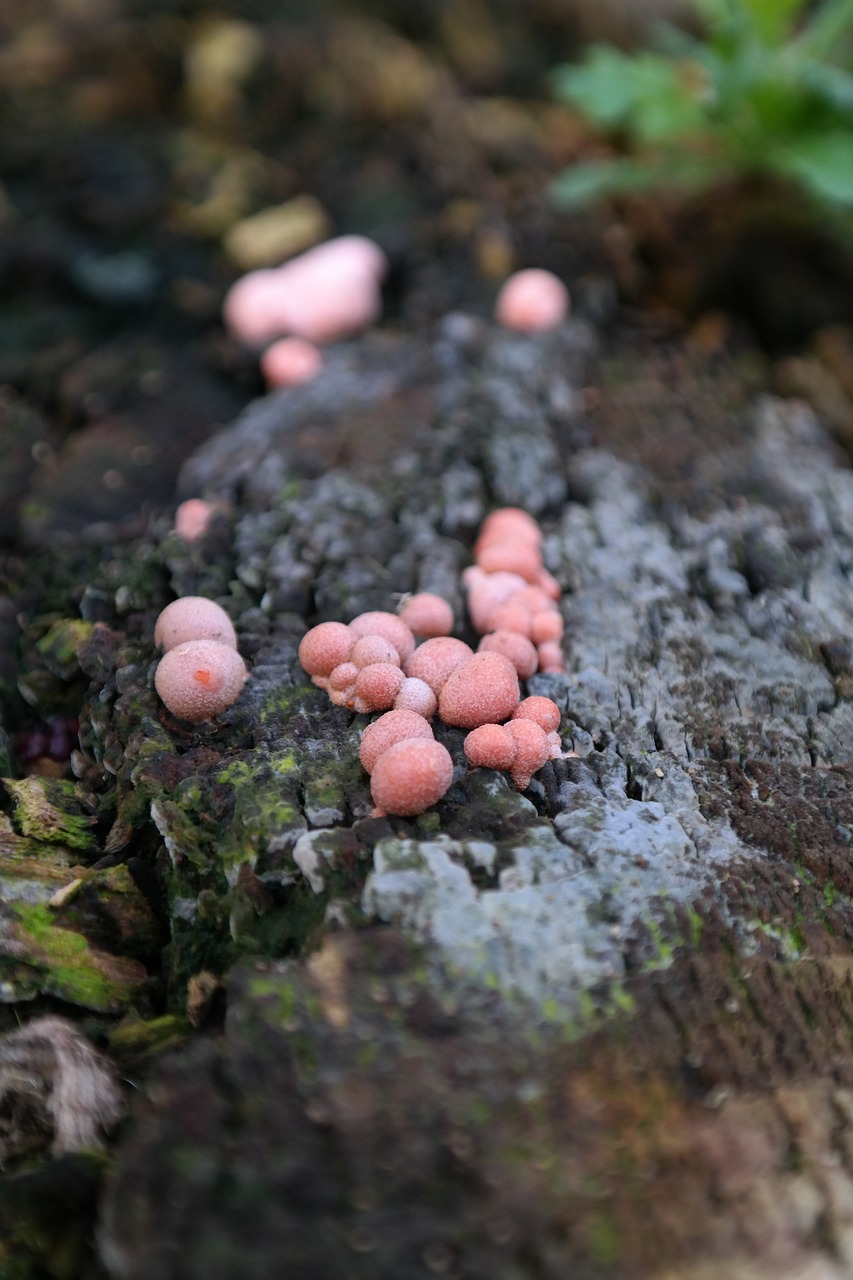Have you ever wondered how you can clone mushrooms to ensure a steady supply for continuous cultivation? Look no further! In this article, we will explore the fascinating process of mushroom cloning and provide you with step-by-step instructions to successfully replicate your favorite fungi. So, put on your lab coat and get ready to uncover the secrets of mushroom cloning!

The Importance of Cloning Mushrooms
Cloning mushrooms is a crucial practice in the world of mushroom cultivation. By cloning mushrooms, you can ensure genetic quality, maintain desirable traits, and maximize yield. Whether you are a seasoned mushroom cultivator or just starting out, understanding the importance of cloning mushrooms is essential for achieving successful and continuous cultivation.
Ensuring Genetic Quality
Cloning mushrooms allows you to maintain the genetic purity of a specific strain. Each strain of mushroom possesses unique characteristics, such as taste, texture, and medicinal properties. By cloning mushrooms, you can ensure that these desirable characteristics are preserved and passed on to future generations.
Without cloning, the genetic diversity of mushrooms can become compromised over time. Genetic mutations or cross-contamination can lead to the loss of desirable traits or the introduction of unwanted characteristics. Cloning helps maintain genetic quality, allowing you to consistently grow mushrooms with the desired traits.
Maintaining Desirable Traits
Every mushroom cultivator has specific traits they desire in their mushroom harvest. By cloning mushrooms, you can select specimens that demonstrate the desired traits and replicate them consistently. This ensures that you will have a reliable supply of mushrooms with the qualities you seek, whether it’s for culinary purposes or medicinal use.
Cloning also allows you to improve upon existing strains. If you come across a mushroom with exceptional characteristics, such as a higher yield or enhanced flavor profile, you can clone it to preserve and expand upon these traits. Through selective cloning and careful cultivation practices, you can continuously refine and develop mushroom strains that meet your specific needs and preferences.
Maximizing Yield
One of the primary goals of mushroom cultivation is to achieve a high yield. Cloning mushrooms plays a significant role in maximizing the yield potential of your crop. By selecting and cloning mushrooms that consistently produce abundant fruiting bodies, you increase the likelihood of achieving a bountiful harvest.
Cloning also enables you to overcome the limitations of seasonal availability. Mushrooms have specific growing seasons, and relying solely on spore-based cultivation may limit your harvest to certain times of the year. By cloning mushrooms, you can extend the growing season and have a continuous supply of fresh mushrooms throughout the year. This not only maximizes yield but also allows for a more stable and consistent mushroom production.
Choosing the Right Mushroom Strain
Before you start the cloning process, it is crucial to choose the right mushroom strain. This involves researching different strains, evaluating growth characteristics, considering environmental requirements, and deciding on desired properties.
Researching Different Strains
There is a vast array of mushroom strains available for cultivation, each with its own unique qualities. Take the time to research and explore the various strains to understand their characteristics, growth habits, and suitability for your cultivation goals. Consider factors such as flavor, texture, medicinal properties, and market demand to narrow down your options.
Evaluating Growth Characteristics
Understanding the growth characteristics of different mushroom strains is essential for successful cultivation. Some strains may require specific environmental conditions, such as temperature, humidity, and light, to thrive. Evaluate these requirements and ensure that you can provide the necessary conditions for optimal growth.
You should also consider other factors like growth rate, fruiting body size, and yield potential. These characteristics can vary significantly between strains, so choose a strain that aligns with your cultivation objectives, available resources, and desired outcomes.
Considering Environmental Requirements
Each mushroom strain has unique environmental requirements for successful cultivation. Some strains thrive in temperate climates, while others prefer tropical or subtropical conditions. Consider the climate in your region and select a strain that can adapt and grow well in your specific environment.
Additionally, consider the available growing space and the resources you have for creating the ideal environment. Some strains may require specialized equipment or controlled environments to thrive. Assess your resources and choose a strain that you can cultivate effectively with the resources you have at hand.
Deciding on Desired Properties
Once you have researched different strains, evaluated their growth characteristics, and considered environmental requirements, it’s time to decide on the desired properties for your cultivation. Think about what qualities you want in your mushrooms, such as flavor, texture, color, or medicinal properties.
Consider your target market and their preferences. If you plan to sell your mushrooms, choosing a strain that appeals to consumers’ tastes and demands can enhance the marketability of your product. Deciding on desired properties will guide your selection when acquiring a suitable mushroom sample for cloning.
Preparing the Cloning Equipment
Before you begin the cloning process, it is crucial to prepare the necessary equipment to ensure a successful outcome. This involves sterilizing tools and surfaces and creating a clean and controlled environment.
Sterilizing Tools and Surfaces
Sterilization is a critical step in cloning mushrooms to prevent contamination and promote healthy growth. Thoroughly clean and sterilize all the tools you will be using, such as scalpels, forceps, and petri dishes. Autoclaving or using a pressure cooker to achieve high temperatures is the most effective way to sterilize your equipment.
Similarly, clean and sterilize the surfaces where you will be working. This includes countertops, laminar flow hoods, or any other workspace you will be utilizing for the cloning process. Maintaining a sterile environment reduces the risk of introducing contaminants that could hinder the growth and development of your cloned mushrooms.
Creating a Clean and Controlled Environment
Creating a clean and controlled environment is crucial for successful mushroom cloning. Consider investing in a laminar flow hood or a glove box to provide a sterile and controlled workspace. These tools filter air, removing particles and microorganisms that could contaminate your cloning process.
Additionally, maintain good personal hygiene and wear clean lab coats or sterilized clothing to avoid introducing contaminants from your own body. Controlling humidity levels and airflow within the cloning area is also important to ensure the optimal growth and development of your mushroom clones. Use a humidifier or misting system to maintain a suitable humidity level, and consider installing fans to regulate airflow.
Selecting a Suitable Mushroom Sample
Choosing a suitable mushroom sample for cloning is essential to ensure successful and healthy growth of the clones. This involves selecting a fresh and healthy specimen and looking for optimal growth features.
Choosing a Fresh and Healthy Specimen
Selecting a fresh and healthy mushroom specimen is essential for successful cloning. Look for mushrooms that are free from any signs of disease, decay, or pest damage. A fresh specimen with intact fruiting body and vibrant color indicates that it is in a healthy and viable state for cloning.
Avoid using mushrooms that have been exposed to adverse conditions or have been stored for an extended period. Such mushrooms may have reduced vitality and may contain contaminants that can negatively affect the cloning process.
Looking for Optimal Growth Features
Optimal growth features are key indicators of a mushroom specimen that is suitable for cloning. Look for mushrooms with desirable traits such as large fruiting bodies, consistent size, and robust growth. These characteristics indicate that the mushroom strain possesses the genetic qualities you desire to replicate.
Observe if the mushroom specimen exhibits any unique or desirable traits, such as enhanced flavor or potent medicinal properties. Identifying these features will allow you to select the best mushroom sample for cloning, ensuring that you propagate the desired traits successfully.

Obtaining Mushroom Tissue for Cloning
Once you have selected a suitable mushroom sample, the next step is to obtain mushroom tissue for cloning. This involves taking a tissue sample from the fruiting body, avoiding contamination, and ensuring sterility throughout the process.
Taking a Tissue Sample from the Fruiting Body
To clone a mushroom, you need to extract tissue from a healthy fruiting body. Using sterilized tools such as scalpels or forceps, carefully cut a small piece of tissue from the fruiting body. Aim for the inner flesh of the mushroom without contaminating it with dirt or other materials.
Place the tissue sample into a sterile container, such as a petri dish. Ensure the container is sealed to prevent contamination and maintain sterility throughout the cloning process.
Avoiding Contamination
Maintaining a sterile environment is crucial to avoid contamination during the tissue sampling process. Ensure that the tools you use are sterile and that you work in a clean and controlled environment. Any introduction of contaminants can negatively impact the success of the cloning process.
Avoid touching the tissue sample directly with your hands or any non-sterile surfaces. Transfer the tissue sample immediately to a sterile container to prevent contamination from airborne particles or microorganisms.
Ensuring Sterility
Sterility is a critical factor throughout the cloning process to ensure the successful growth of mushroom clones. Maintaining a sterile environment includes using sterilized tools, wearing gloves and masks, and working within a laminar flow hood or a glove box.
Additionally, sterilize any media or nutrient solution you will be using in the cloning process. Autoclaving or pressure cooking the nutrient medium is essential to kill any potential contaminants.
Preparing the Nutrient Medium
The nutrient medium is a crucial component in the cloning process as it provides the necessary nutrients for mushroom growth. It is important to choose the right nutrient formula and sterilize and cool the medium appropriately.
Choosing the Right Nutrient Formula
Different mushroom strains require specific nutrient formulas for optimal growth. Research the nutritional requirements of the strain you are cloning and choose a nutrient formula that meets these requirements. Nutrient formulas usually consist of a combination of agar, sugars, vitamins, and other supplements essential for mushroom growth.
Consider consulting with experienced cultivators or referring to reputable resources to ensure you select the appropriate nutrient formula. Using a suitable nutrient formula will provide the necessary nutrition to support the growth of the mushroom clones.
Sterilizing and Cooling the Medium
Sterilization of the nutrient medium is crucial to eliminate any potential contaminants that could hinder the growth of your mushroom clones. Autoclaving is the most effective method for sterilization, as it exposes the medium to high temperatures and pressure that effectively kill microorganisms.
After sterilizing the nutrient medium, it is important to cool it down to a suitable temperature before proceeding with the cloning process. Be cautious not to introduce any contaminants during the cooling process, and ensure that the medium is at an appropriate temperature for inoculation.

Inoculating the Nutrient Medium
Inoculating the nutrient medium involves placing the mushroom tissue onto the prepared medium and ensuring proper distribution to facilitate the growth and development of the clones.
Placing the Mushroom Tissue on the Medium
Using sterilized tools such as forceps or scalpels, transfer the mushroom tissue sample onto the surface of the nutrient medium. Gently place the tissue onto the medium, ensuring that it comes into contact with the surface while avoiding any overlap.
Ensuring Proper Distribution
To increase the chances of successful cloning, it is important to distribute the mushroom tissue evenly across the nutrient medium. This allows for uniform growth and development of the mushroom clones. Carefully spread the tissue sample across the medium while maintaining sterility and avoiding contamination.
Incubation and Colonization
After inoculating the nutrient medium with the mushroom tissue, the clones require a controlled environment for incubation and colonization. Providing optimal temperature and humidity conditions while monitoring the growth progress is essential during this stage.
Providing Optimal Temperature and Humidity
Different mushroom strains have specific temperature and humidity requirements for successful colonization. Research the ideal conditions for the strain you are cloning and create a suitable environment within your incubation area.
Maintain a consistent temperature within the optimal range for the strain, usually between 20°C to 25°C (68°F to 77°F). Ensure that humidity levels are also maintained within the recommended range, typically around 80% to 90%. Using a humidifier and a temperature controller helps create the desired conditions for colonization.
Monitoring Growth Progress
Regularly monitor the growth progress of the mushroom clones during incubation. Observe for signs of contamination, such as the appearance of mold or discoloration, which indicate that the clones have been compromised. Promptly remove any contaminated samples to prevent the spread of contaminants to healthy clones.
Additionally, monitor the colonization process, which involves the mycelium spreading and covering the nutrient medium. This process typically takes several weeks, depending on the mushroom strain and environmental conditions. Once the nutrient medium is fully colonized, the clones are ready to be transferred to a suitable growing substrate.

Transferring Colonized Medium to Growing Substrate
Transferring the colonized medium to a growing substrate is a crucial step in the cloning process. This allows the mushroom clones to develop into fruiting bodies. Choosing a suitable substrate material and creating ideal conditions for fruiting is essential during this stage.
Choosing Suitable Substrate Material
Different mushroom strains have specific substrate requirements for fruiting. Research the preferred substrates for the strain you are cloning and select the appropriate material. Common substrate options include straw, wood chips, sawdust, or a combination of these.
Ensure that the chosen substrate material is clean, free from contaminants, and prepared according to the recommended protocols. Preparing the substrate material properly provides the necessary nutrients and conditions for the cloned mushrooms to thrive and develop fruiting bodies.
Creating Ideal Conditions for Fruiting
Creating ideal conditions for fruiting involves providing suitable temperature, humidity, and lighting for the mushroom clones. Research the optimal fruiting conditions for the strain you are cloning and replicate these conditions within your growing environment.
Maintain the proper temperature, often slightly cooler than the incubation stage, typically between 16°C to 21°C (61°F to 70°F). Increase humidity levels within the growing area to encourage fruiting, usually around 90%. Additionally, provide indirect light or simulate natural lighting conditions to trigger and support the formation of fruiting bodies.
Maintaining and Multiplying Mushroom Culture
Once you have successfully cultivated and harvested mature mushrooms, there are ways to maintain and multiply the mushroom culture for further cultivation. Harvesting mature mushrooms, reusing the colonized substrate, and scaling up production are essential steps in continuous cultivation.
Harvesting Mature Mushrooms
Harvest mushrooms when they have reached their optimal maturity. Avoid waiting too long, as over-mature mushrooms may drop spores and potentially introduce genetic variation into your culture. Harvesting at the right time ensures that you obtain mushrooms with the desired qualities and characteristics.
When harvesting, use sterilized tools to cut the mushrooms at the base or twist them gently to detach them from the substrate. Be careful not to damage the surrounding mycelium or introduce contaminants during the harvesting process.
Reusing the Colonized Substrate for Further Cultivation
Reusing the colonized substrate for further cultivation is a sustainable and cost-effective practice. After harvesting the mature mushrooms, assess the condition of the substrate. If it is still in good condition and shows no signs of contamination, it can be reused for subsequent rounds of cultivation.
Remove any remaining mushrooms or debris from the substrate and store it in a clean and sterile container. Keep the substrate moist and protect it from outside contaminants. When you are ready to initiate the next round of cultivation, inoculate the prepared substrate with fresh mushroom tissue or use the existing mycelium to clone and propagate the mushrooms.
Scaling Up Production
If you intend to scale up mushroom production, cloning allows you to replicate successful strains and increase your yield. By following the cloning process and maintaining optimal conditions for growth, you can continuously clone and propagate your chosen mushroom strain.
To scale up production, you can increase the number of inoculated nutrient plates, expand the size of your growing area, or invest in advanced cultivation methods. Continuously monitor and optimize your cultivation practices to meet the demand and ensure consistent and abundant mushroom production.
In conclusion, understanding the importance of cloning mushrooms for continuous cultivation is essential for successful mushroom cultivation. By ensuring genetic quality, maintaining desirable traits, and maximizing yield, cloning allows you to consistently grow mushrooms with desired qualities and characteristics. By choosing the right mushroom strain, preparing the cloning equipment, selecting suitable mushroom samples, obtaining tissue for cloning, preparing the nutrient medium, inoculating the medium, incubating and colonizing, transferring to growing substrate, and maintaining and multiplying mushroom culture, you can achieve continuous cultivation and enjoy a bountiful harvest of mushrooms.

